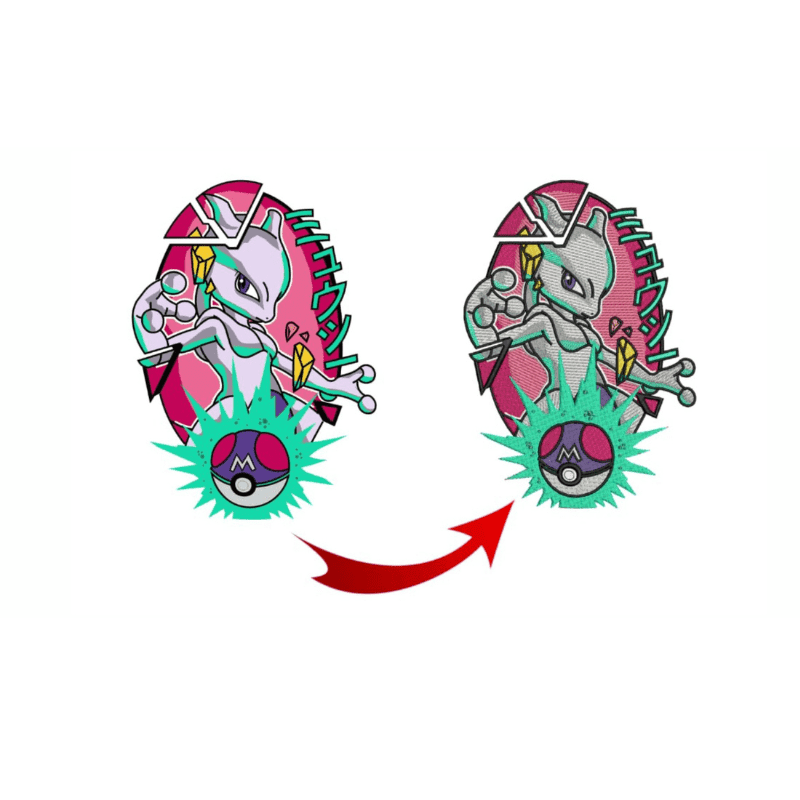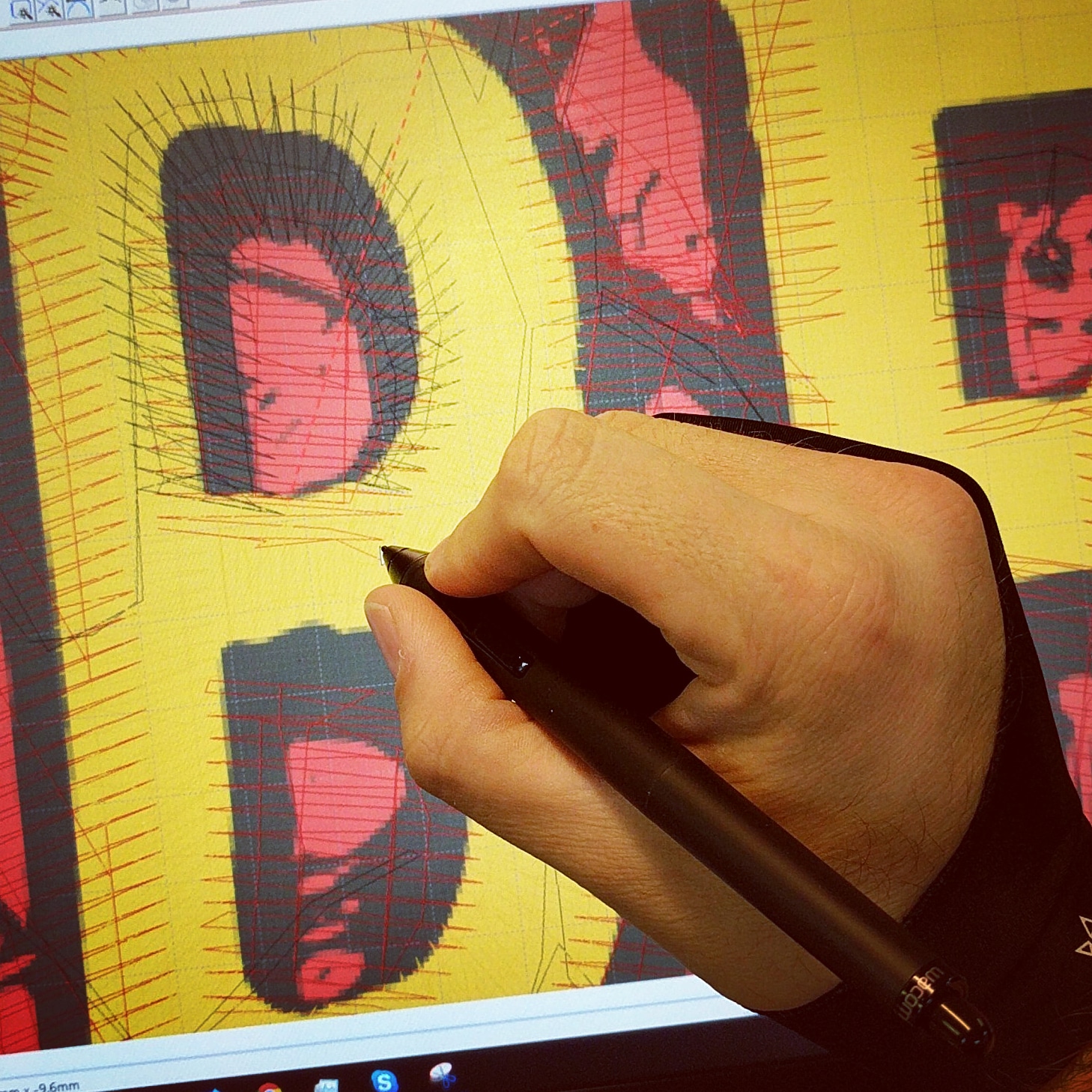Streamlining the Art of Embroidery Digitizing: Step-by-Step Guide
As technology continues to breakthrough, the digitization process has actually come to be much more easily accessible, permitting lovers to bring their intricate designs to life with ease. In this overview, we will certainly unwind the intricacies of embroidery digitizing, damaging down each step carefully to streamline the procedure and empower both newbies and experienced embroiderers alike.
Recognizing Needlework Digitizing Software Application
Embroidery digitizing software application works as an important tool for transforming detailed layouts into digital styles compatible with embroidery machines, helping with specific stitching and personalization. This specific software program allows users to import numerous photo documents formats, such as JPG or PNG, and convert them right into embroidery machine-readable layouts like DST, EXP, or PES - Digitizing for Embroidery. By utilizing functions like stitch modifying, rug options, and thread color choice, digitizing software program makes it possible for users to manage every element of the design process
Moreover, advanced embroidery digitizing software supplies devices for creating complex layouts, adjusting stitch density, and including detailed information. Customers can additionally preview the style prior to sewing it out, making certain accuracy and lessening mistakes. Furthermore, several software application give automated features that help streamline the digitizing procedure, conserving time and initiative.
Recognizing the capacities of embroidery digitizing software application is crucial for attaining high-grade lead to embroidery projects. By understanding this tool, needlework enthusiasts and professionals can release their creativity and bring intricate layouts to life with precision and effectiveness.

Choosing the Right Style File
After familiarizing on your own with the capacities of embroidery digitizing software, the following essential step in the process is selecting the right style documents for your task. Digitizing for Embroidery. When selecting a layout declare embroidery digitizing, it's vital to think about the intricacy of the layout, the size of the final product, and the sort of fabric you will certainly be dealing with
For complex styles with fine details, a high-resolution picture or vector file is recommended to guarantee that the embroidery maker can precisely reproduce the style. Additionally, the dimension of the end product plays a significant duty in selecting the appropriate design data. Larger styles may need higher resolution files to maintain quality and sharpness.
Additionally, the sort of material you will be embroidering on influences the selection of layout documents. Various fabrics may need modifications in the layout data to make sure that the stitches are appropriately aligned and the style looks like intended. By carefully choosing the right layout data based on these factors, you can establish on your own up for an effective embroidery digitizing procedure.
Digitizing Devices and Techniques
Utilizing specialized software and precision techniques, digitizing tools are vital in transforming detailed layouts into embroidery-ready data. Embroidery digitizing software, such as Wilcom, Hatch, or Embrilliance, gives the necessary system to transform artwork into stitch data. These programs use features like stitch editing and enhancing, rug options, and text tools to make certain the layout converts seamlessly onto fabric.
One of the essential techniques in digitizing is producing a clear path for the needlework device to follow. This involves digitizing each aspect of the style with accuracy, establishing stitch kinds, thickness, and directions. By using tools like digitizing tablet computers or software-specific plugins, embroiderers can attain a high level of precision in their digitized styles.
Furthermore, mastering the art of underlay sewing Continue is critical for generating quality needlework. Underlay stitching stabilizes the fabric and develops a foundation for the style, making certain that the end product is both aesthetically attractive and lasting. By recognizing these digitizing tools and methods, embroiderers can elevate their craft and bring complex designs to life with precision and check here performance.
Personalizing Stitch Kinds and Instructions
The choice of stitch types can considerably affect the total appearance and appearance of the stitched design. By tactically combining these stitch types, embroiderers can achieve depth and measurement in their layouts.
Furthermore, the instructions of stitches plays an essential function in enhancing the aesthetic allure of the final needlework. Numerous stitch instructions can include appearance, highlight details components, and produce aesthetic interest. For example, changing the angle of stitches can imitate activity or natural patterns like fur or plumes. By trying out different stitch angles and patterns, embroiderers can bring their designs to life with impressive information and intricacy. Mastering the art of customizing stitch kinds and directions empowers embroiderers to unleash their creative thinking and elevate the top quality of their work.
Screening and Refining Your Digitized Style
To make sure the accuracy and quality of your digitized design, thorough testing and improvement are vital action in the embroidery digitizing process. Once you have actually completed the digitization of your style, it is essential to examine it prior page to waging the actual embroidery. Testing enables you to identify any kind of possible concerns such as string breaks, stitch density problems, or design distortions that might impact the final outcome.

After screening, it is necessary to fine-tune your digitized style based upon the responses from the examination sew-out. This may entail tweaking stitch setups, changing thickness, or making modifications to the general design to accomplish the wanted outcome. By iterating with testing and improvement, you can fine-tune your digitized style to perfection prior to relocating ahead with the actual embroidery process.
Conclusion
In verdict, understanding the art of needlework digitizing calls for a detailed understanding of the software, selecting the best layout data, using digitizing tools and techniques, customizing stitch kinds and directions, and testing and fine-tuning the digitized layout. By following these actions, embroiderers can streamline the digitizing process and develop high-grade stitched layouts with precision and efficiency.